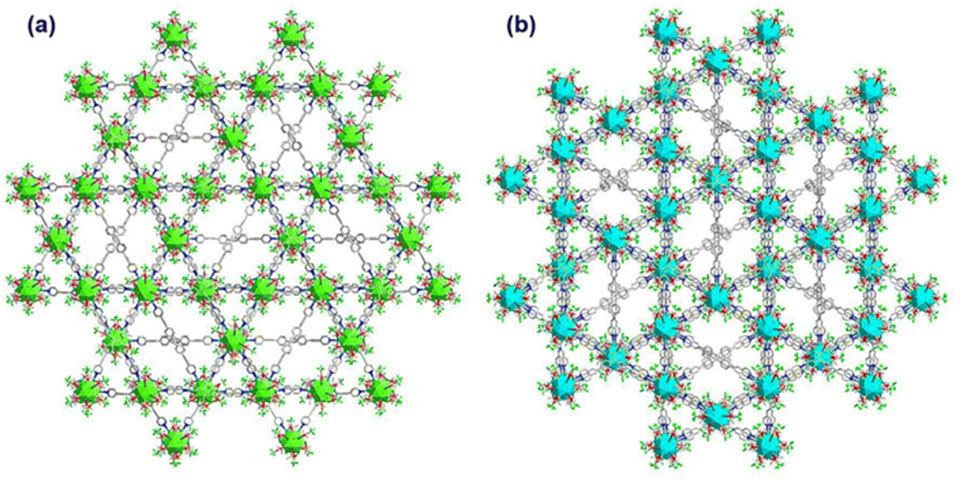| Jul 27, 2023 |
| (Nanowerk News) In recent years, there has been a growing interest in using silver nanoclusters (Ag NCs), nanoscale silver particles composed of tens to hundreds of atoms, across various fields like material science, chemistry, and biology. Ag NCs typically have sizes ranging from 1–3 nm. Scientists have made significant progress in creating and manipulating Ag NCs, leading to the development of silver cluster-assembled materials (SCAMs).
|
|
SCAMs are light-emitting materials made up of many interconnected Ag NCs, joined together by special organic linker molecules called “ligands.” What is special about them is their molecular-level structural designability and unique photophysical properties. However, their widespread use has been limited owing to their dissimilar structural architecture when immersed in different solvents.
|
|
A team of researchers led by Saikat Das and Yuichi Negishi from the Department of Applied Chemistry, Faculty of Science, Tokyo University of Science, and the Carbon Value Research Center, Research Institute for Science & Technology, Tokyo University of Science, have developed two new luminescent materials that can selectively sense iron (Fe3+) ions in water. These materials, known as Silver Cluster-Assembled Materials, have unique photophysical properties and could have significant implications for environmental monitoring and assessment.
|
|
This study was published in the journal Nanoscale (“Synthesis and luminescence properties of two silver cluster-assembled materials for selective Fe3+ sensing”).
|
 |
| The two new SCAMs (a) TUS 1 and (b) TUS 2 show remarkable stability in different solvents and exhibit fluorescence with high sensitivity to Fe3+ ions in aqueous media, indicating the potential for their use in environmental monitoring and assessment. (Image: Nanoscale)
|
|
Silver nanoclusters, tiny particles of silver composed of tens to hundreds of atoms, have been the focus of intense research in recent years due to their potential applications in various fields such as material science, chemistry, and biology. However, one of the key challenges in utilizing these nanomaterials is their stability, as their properties can be highly sensitive to their environment.
|
|
To address this issue, the researchers synthesized two unprecedented three-dimensional (3D) luminescent SCAMs, [Ag12(StBu)6(CF3COO)6(TPEPE)6]n (denoted as TUS 1), and [Ag12(StBu)6(CF3COO)6(TPVPE)6]n (denoted as TUS 2). These materials are composed of an Ag12 cluster core connected by quadridentate pyridine linkers. Despite the difference in the linker structure, it does not affect the formation of the Ag cluster node during the reaction since the other constituents remain similar.
|
|
The researchers found that these materials exhibit excellent chemical stability in a wide range of solvent polarity. Moreover, they observed a change in their luminescence property at room temperature, which was further utilized to assess their applicability. Both materials exhibit remarkable sensing ability for Fe3+ in aqueous medium, with promising detection limits comparable to the standard.
|
|
The team also tested the ability of these materials to detect Fe3+ in real water samples, demonstrating their potential application possibility. This development could be a significant step forward in the field of environmental monitoring, providing a highly sensitive assay for detecting Fe3+ in aqueous medium.
|
|
The research is a testament to the potential of silver nanoclusters and their applications. As the team continues to explore the properties and potential uses of these materials, we can expect to see further advancements in this exciting field of research.
|
- SEO Powered Content & PR Distribution. Get Amplified Today.
- PlatoData.Network Vertical Generative Ai. Empower Yourself. Access Here.
- PlatoAiStream. Web3 Intelligence. Knowledge Amplified. Access Here.
- PlatoESG. Automotive / EVs, Carbon, CleanTech, Energy, Environment, Solar, Waste Management. Access Here.
- BlockOffsets. Modernizing Environmental Offset Ownership. Access Here.
- Source: https://www.nanowerk.com/nanotechnology-news2/newsid=63419.php




